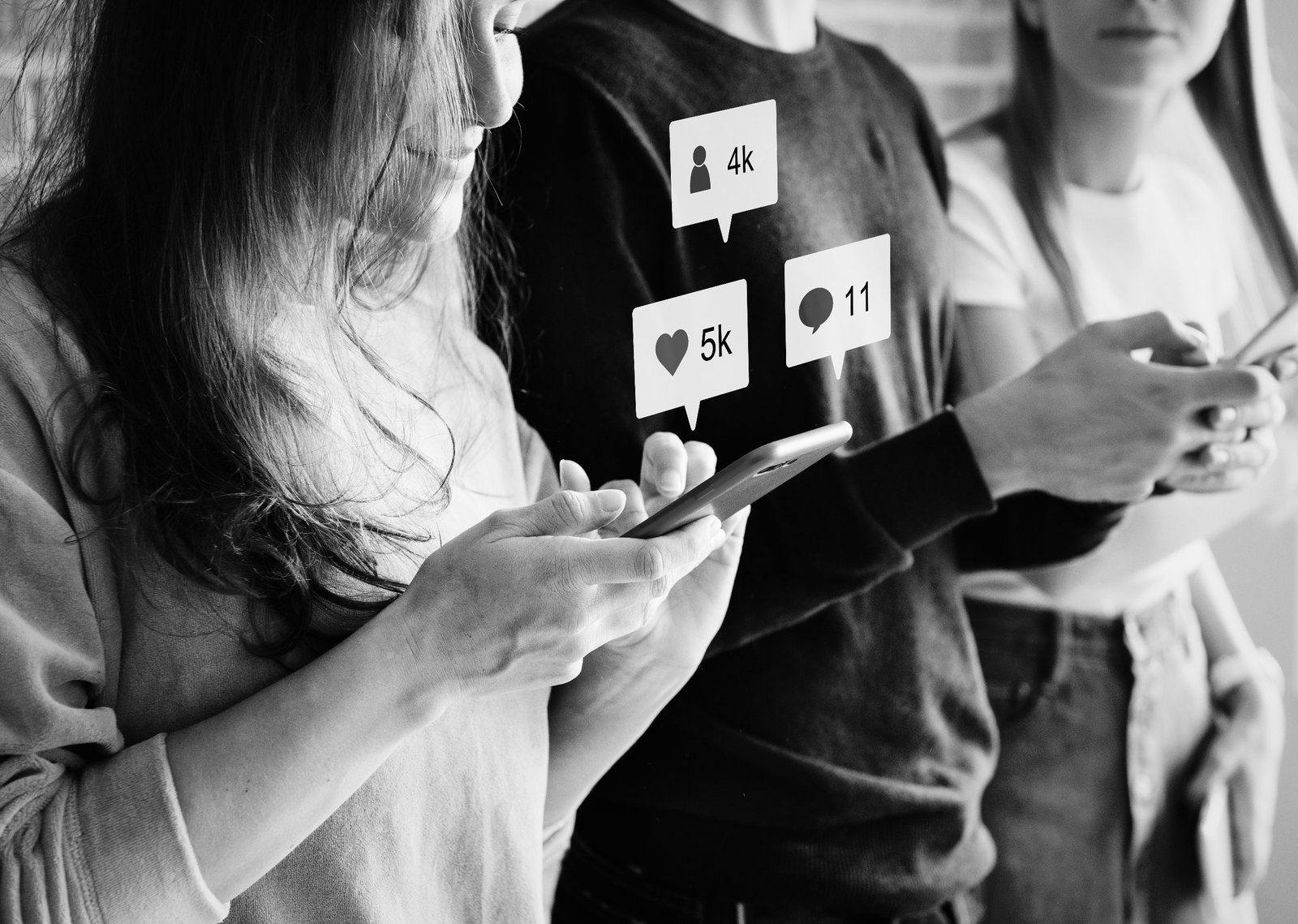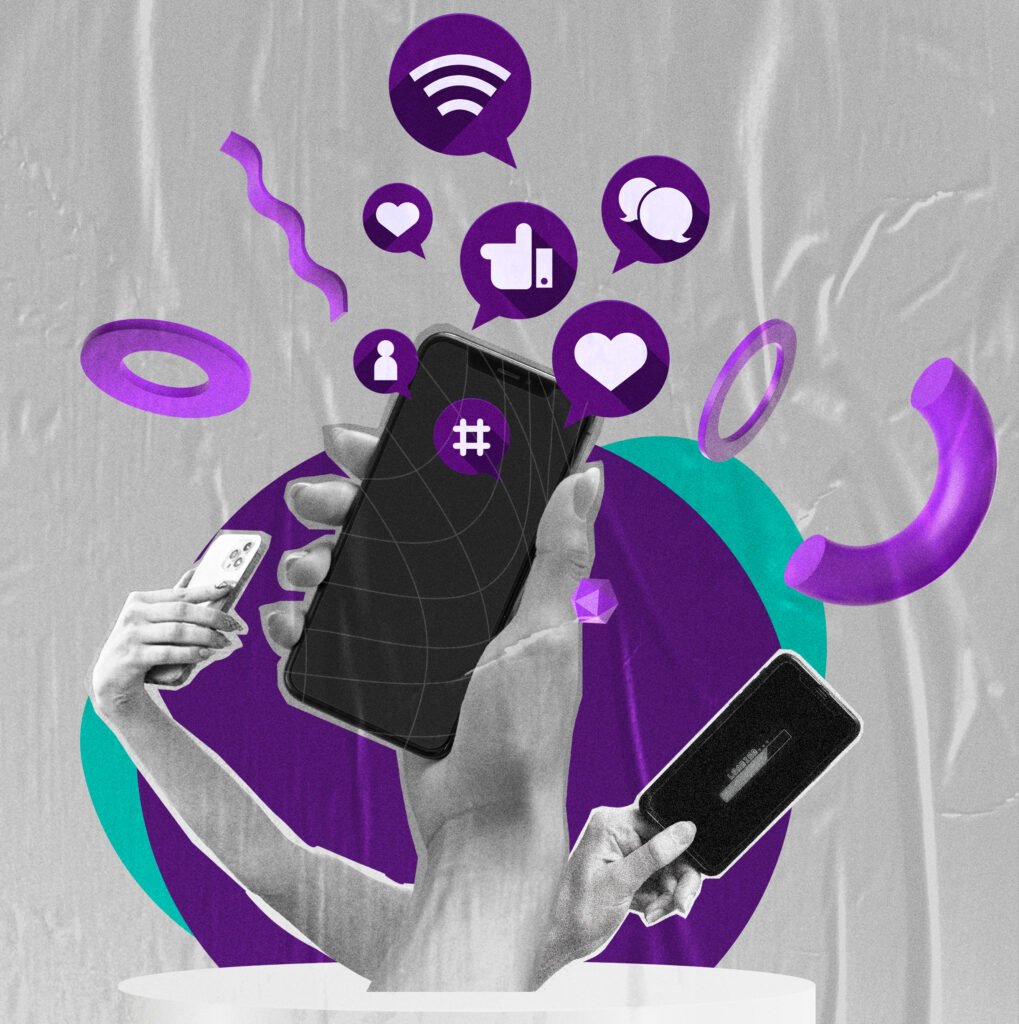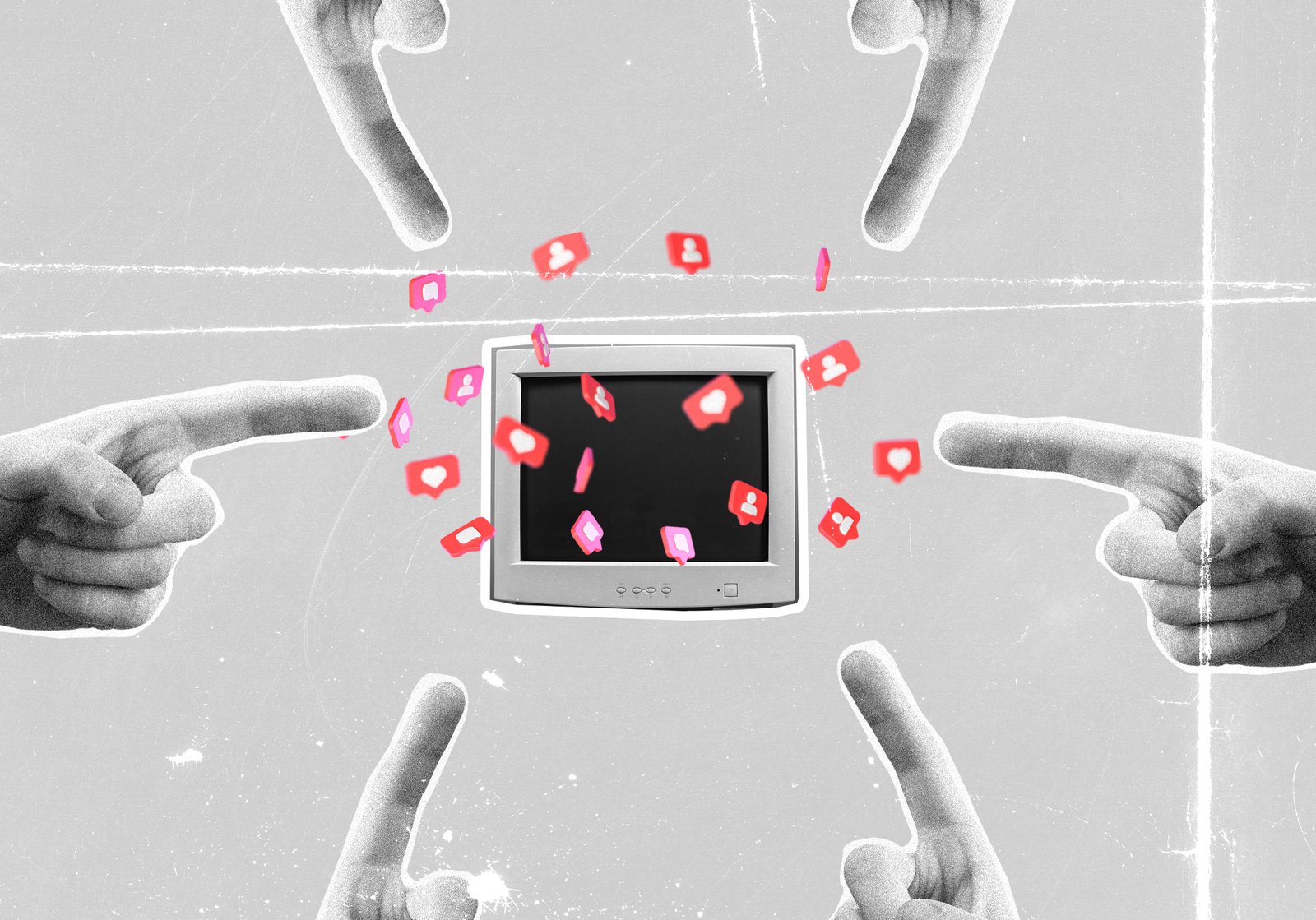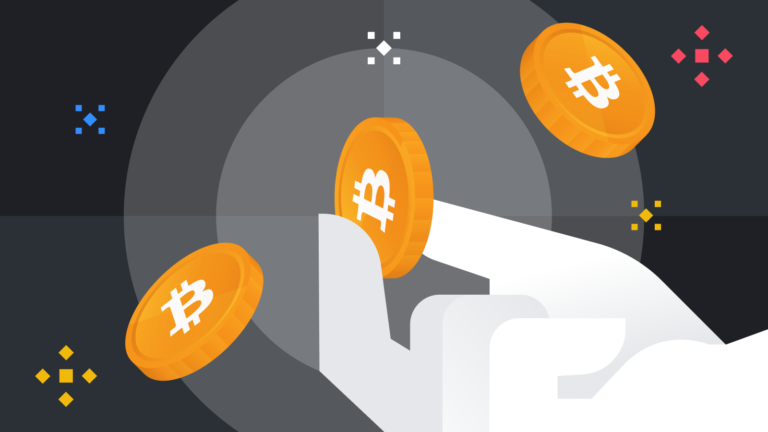How to use social media like a TV: turn it on, tune in, then please turn it off
Picture this: it’s 7 p.m., you’re sprawled on the couch, scrolling through your phone.
The X app is open, and you’re wading through a sea of hot takes, memes, and outrage threads. An hour passes—maybe two—and you realize you haven’t blinked in what feels like forever.
Your brain’s buzzing, your mood’s tanked, and you’re not even sure why you’re mad about a stranger’s opinion on pineapple pizza. Sound familiar?
Social media has a way of hijacking our attention, sucking us into an endless loop of information that feels urgent but often leaves us drained, depressed, or downright enraged. It’s time we rethink how we engage with it.
Here’s an idea: how about we treat social media like an old-school television:? We can turn it on when you need it, enjoy it for what it’s worth, then switch it off to live your actual life.
This isn’t just about cutting screen time or “digital detoxing” for a weekend. It’s about recognizing social media for what it is—a tool, not a lifestyle. It’s about breaking free from the toxic cycle of constant connectivity that’s rewiring our brains and emotions.
In this deep dive, we’ll unpack why social media feels like an all-consuming vortex, how its design fuels negativity, and—most importantly—how to use it intentionally, like flipping on a TV for a specific show, then walking away to reclaim your time, energy, and mental clarity.
The endless loop: why social media feels like a trap
Let’s start with the obvious: social media isn’t designed to be a casual, pop-in-and-out experience anymore.
Platforms like X, Instagram, TikTok, and their ilk are built to keep you hooked. Algorithms feed you a steady drip of content tailored to your interests, fears, and triggers. Every scroll delivers a hit of dopamine, that feel-good chemical that makes you crave just one more post, one more video.
Before you know it, you’re down a rabbit hole, arguing with a bot about climate change or feeling inadequate because someone’s curated vacation pics look better than your reality.
The numbers back this up. A 2024 study from the Pew Research Center found that 70% of Americans feel overwhelmed by the volume of information on social media, yet 60% check their apps multiple times a day. Globally, people spend an average of 2 hours and 27 minutes daily on social platforms, according to Statista’s 2025 report.
That’s over 17 hours a week — time that could’ve been spent reading, hiking, or, you know, actually talking to people in real life.
But it’s not just about time. Social media’s endless loop messes with our heads. Studies, like one from the Journal of Social and Clinical Psychology (2019), link heavy social media use to higher rates of anxiety, depression, and low self-esteem.
The constant barrage of bad news, performative positivity, and polarizing arguments creates a perfect storm of emotional overload. You log on to check a friend’s update, and suddenly you’re spiraling over a political rant or comparing your life to an influencer’s highlight reel. It’s no wonder we feel like garbage afterward.
Then there’s the fear of missing out — FOMO, the insidious force that keeps us tethered to our screens. Social media has convinced us that stepping away means losing something critical: a job opportunity, a viral moment, a chance to “stay relevant.”
For creators, entrepreneurs, and professionals, this fear is amplified. If you’re not posting, engaging, or staying visible, are you even in the game? This mindset traps us in a cycle where social media isn’t just a tool—it’s the scaffolding of our lives. And that’s where the real toxicity lies.
Read also…
The toxic effects: why constant connectivity hurts
Social media’s impact on our mental health isn’t just anecdotal; it’s measurable. Let’s break down the ways it messes with us:
Emotional whiplash
Platforms like X thrive on high-octane emotions. Outrage travels faster than nuance—posts that spark anger or fear get more clicks, retweets, and shares.
A 2023 study from MIT found that tweets with negative or inflammatory language spread six times faster than neutral ones. So, the algorithm feeds you more of it, keeping you in a state of perpetual agitation.
You’re not just informed; you’re emotionally hijacked.
Comparison culture
Social media is a highlight reel, not reality. Yet, we can’t help but measure our lives against the polished facades of others. A 2022 meta-analysis in “Computers in Human Behavior” found that passive scrolling—lurking without posting—correlates strongly with feelings of inadequacy and envy. You see someone’s “perfect” life, and suddenly your cozy movie night feels like a failure.
Information overload
The human brain isn’t built to process the firehose of information social media delivers. A 2025 report from the World Health Organization noted that excessive exposure to conflicting or distressing online content can lead to “cognitive fatigue,” reducing our ability to focus, make decisions, or even feel empathy. We’re drowning in takes, stats, and hot-button issues, and it’s exhausting.
Addictive design
Social media platforms are engineered to keep you scrolling. Features like infinite scroll, autoplay videos, and push notifications exploit our psychological vulnerabilities.
A 2021 whistleblower report from Meta (Instagram’s parent company) revealed internal studies showing that the platform knew its design worsened mental health for teens, yet prioritized engagement over well-being. X’s real-time, rapid-fire format can be just as gripping, making it hard to look away.
The result? We’re not just using social media—we’re being used by it. It’s dictating our moods, our attention, and, increasingly, our sense of self. If we want to break free, we need to rethink how we engage with it entirely.

A new try: social media as something finite, not infinite
Here’s the core idea of this suggestion: treat social media like a television set from the 1990s.
Back then, you turned on the TV to watch a specific show — maybe “Friends” at 8 p.m. or the nightly news. When it was over, you switched it off and went about your life.
Social media can work the same way if we use it intentionally, as an add-on to our lives rather than the main event. Here’s how to try to make it happen:
1. Set clear intentions
Before you open X or any other platform, ask yourself: “Why am I here?” Are you checking a friend’s post? Promoting your work? Catching up on industry news?
Having a clear purpose keeps you from falling into the mindless-scroll trap. For example, if you’re a freelancer, you might log on to share a project update or connect with a client. Once that’s done, get out. Think of it like tuning into a specific channel, not flipping through 500 of them.
Pro tip: write down your intention before logging on. It sounds cheesy, but a quick note like “Share blog post and respond to comments” keeps you focused. If you’re just there to “see what’s up,” you’re already halfway down the rabbit hole.
2. Timebox your usage
Set strict limits on how long you spend on social media. Use tools like Screen Time (iOS) or Digital Wellbeing (Android) to cap your daily usage—say, 30 minutes to an hour, depending on your needs.
If you’re using social media for work, schedule specific windows (e.g., 15 minutes in the morning, 15 in the evening) to check notifications or post content. The key is to treat it like a task, not a lifestyle.
Pro tip: try the “TV Guide” method. Plan your social media “shows” in advance—specific times for specific tasks. For instance, “9 a.m.: Check X for industry updates. 6 p.m.: Post on Instagram.” Outside those times, the “TV” stays off.
See more…
3. Curate Your Feed Ruthlessly
Your social media feed is like the channels you subscribe to. If it’s full of toxic arguments, unrealistic influencers, or doom-and-gloom news, you’re setting yourself up for misery.
Unfollow accounts that make you feel bad, even if they’re “important” or popular. Follow people and pages that inspire, inform, or align with your values. On X, mute keywords or accounts that trigger you—think political buzzwords or drama-prone influencers.
Pro tip: use lists or custom feeds to organize content. For example, create an X list for “Work Contacts” or “Positive Vibes” so you can skip the noise and go straight to what matters.
4. Know when to turn it off
This is the big one. Social media’s grip comes from the illusion that you have to stay plugged in. But you don’t. The world won’t end if you miss a trending hashtag or don’t weigh in on the latest controversy.
To break the cycle, practice “logging off” deliberately. That might mean physically putting your phone in another room, turning off notifications, or even deleting apps for a set period (weekends are a great start).
Pro tip: replace social media with real-world rituals. Instead of scrolling before bed, read a book or journal. Instead of checking X during lunch, call a friend or go for a walk. These small swaps help rewire your habits and remind you there’s a life beyond the screen.
5. Combat FOMO with perspective
FOMO thrives on the fear that you’re missing out on opportunities or relevance. But let’s be real: most of what’s happening online isn’t make-or-break. If you’re worried about work or visibility, focus on quality over quantity. A single thoughtful post or meaningful connection often outweighs constant posting.
And if you’re not a content creator? Remind yourself that your worth isn’t tied to likes, retweets, or follower counts. Your real life — your relationships, hobbies, and experiences — matters more.
Pro tip: do a “FOMO audit.” For a week, track what you’re afraid of missing online. Then ask: Did it actually matter? Most of the time, you’ll realize the stakes were lower than you thought.
6. Detox regularly
Even with boundaries, social media can creep back into your life. Schedule regular breaks—whether it’s a day, a weekend, or a full week—to reset. Studies, like one from the University of Pennsylvania (2018), show that even a week-long break from social media can reduce stress and improve well-being.
Use these breaks to reconnect with offline activities: cooking, hiking, painting, or just staring at the clouds. It’s a reminder that life exists beyond the algorithm.
Pro tip: announce your break if it feels right (e.g., “Taking a week off X to recharge!”). This sets expectations and reduces the pressure to respond to messages or notifications.
Read also…

The bigger picture: reclaiming control
The goal isn’t to demonize social media. It’s a powerful tool for connection, creativity, and learning. I mean, where else can you find a tutorial on knitting, a debate about AI ethics, and a cat video in the same five minutes? But when it becomes an all-consuming loop, it stops being a tool and starts running the show. By treating it like a TV—something you turn on with purpose and turn off when you’re done—you take back control.
This shift isn’t easy. Society’s obsession with constant connectivity runs deep, and the pressure to stay “on” is real, especially for those whose livelihoods depend on visibility. But the cost of not setting boundaries is higher: burnout, fractured attention, and a life that feels like it’s happening through a screen.
The truth is, you won’t lose everything by stepping away. The opportunities, connections, and moments that matter will still be there when you log back on.
Choose your channel
Imagine your life as a TV with endless channels. Social media is just one of them—a loud, flashy one, sure, but not the only one.
There’s the “Real Life” channel, full of messy, beautiful moments: coffee with a friend, a sunset walk, a quiet evening with a good book. There’s the “Work” channel, where you focus on your craft without the distraction of likes. There’s even the “Do Nothing” channel, where you just exist, free from the need to perform or consume.
The beauty of this metaphor is that you hold the remote.
You decide what to watch, when to tune in, and when to hit the power button. So, next time you pick up your phone, ask yourself: “Is this the channel I want to be on right now?” If not, change it—or better yet, turn it off and go live your life.
Get fresh content delivered to you
Sign up to our newsletter and receive our latest updates and exclusive content. No spam, one e-mail per week, maximum!






